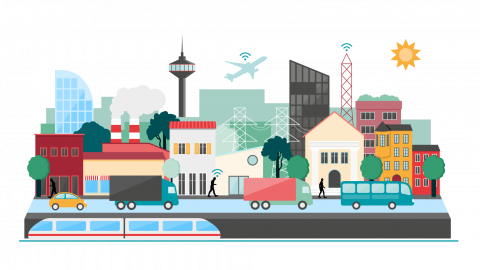Changes that affect your organization are not only coming from customers, but rather also have some sort of dependencies or functionality around partners as part of your financial institution. This can be isolated to a certain business function of your company or a broader E2E process, or a mix. Partner Management is not different from Customer Management regarding your possibilities within Salesforce, but the end results can be very different depending on how you implement it. One example is how you are working with external partners around bringing in new business. If you operate with selling Insurances, you might have both internal and external Sales Teams. Perhaps you have some parts of your customer service operating taken care of externally as well, or some broader external services towards brokers or other Comparison Tools for the customers to have you compete over her between 50 other Insurance companies? Combining internal and external processes into one common platform may seem like a complex challenge. Chances are, you are sitting with different systems today, which all operates on different business processes and slightly different capabilities. Releasing changes to existing processes across your internal and external services requires more time and effort than your organization can afford, and some application is always a “bit behind” regarding what it offers. This increases your Time to Market for new offerings and products you want to launch, and you don’t feel like you are running full speed towards your goals set up in that management workshop last autumn.
With Salesforce you have the capabilities to build your Eco-System around the PaaS approach with common layers and processes for your business, regardless of how your internal and external models look like. Extending the core platform with Experience Cloud give external actors access to all the great things you build on the core platform regarding business processes, integrations, automation, and everything in between. Your Access Controls steer which data external users see at what time and what they can do with this data, i e view vs. edit capabilities. The great thing about Salesforce is that with a good and well-thought through approach to your requirements you can exclusively use configuration to manage this, over code (but keep a more programmatic approach in your back pocket for those complex scenarios you might stumble across).
Experience Cloud enables you to provide an UI for both external partners and customers, as a financial institution you can set up a Community for your Lead Management and Nurturing external business force, or a Customer Portal for management of one’s Account or support tickets. With the great offerings currently available for Experience Cloud you do this setup of a Portal in similar manner as all other configuration, from within the Platform. This streamlines your development around internal and external functionality exposed in your eco-system. There are great templates to get you up and running quickly with this development all from within Salesforce and you can show case a prototype in days - not months.
Getting a Customer- or Partner- facing Portal up and running is in itself not a complex task. However, there are more to think about when building this on the same platform as all your other business processes are running on and where you keep most data with a range of different classifications of that data. This is when you sit down and define your Portal with aspects around Security, Compliance and Usability. I always prefer to restrict as much as possible and open as per needs arise, this is called a bottom-up approach based on POLP (Principle of Least Privilege) and is preferable to always strive towards. I prefer spending some extra time here and there to extend access rather than re-thinking the whole security and access implementation due to one new restriction requirement for one certain user group, and so should you!
Please join the conversation and share your thoughts with me.



